The Seven Wonders of the Medieval World are :
Table of Contents
1. **Stonehenge (England)**
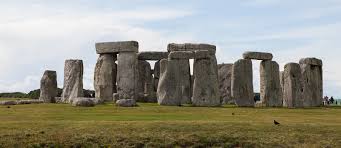
Stonehenge
Stonehenge is one of the most famous prehistoric monuments in the world, located in Wiltshire, England. Built between 3000 BC and 2000 BC, it is a ring of standing stones, each around 13 feet high, seven feet wide, and weighing about 25 tons.
The exact purpose of Stonehenge remains a mystery, with theories ranging from it being a burial ground to an astronomical observatory or a place of religious significance.
The construction of Stonehenge took place in several phases, and its design evolved over millennia. The effort and coordination needed for its construction are seen as an impressive feat of prehistoric engineering.
Stonehenge is an icon of Britain’s heritage and is a UNESCO World Heritage Site. Its alignment with the solstices suggests its use as an ancient calendar.
Today, Stonehenge is a popular tourist destination, with ongoing research and preservation efforts to protect it for future generations.
2. **Colosseum (Rome, Italy)**
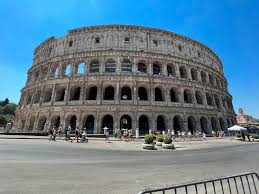
Colosseum
The Colosseum, also known as the Flavian Amphitheatre, is an iconic symbol of Imperial Rome. It was constructed between AD 70 and 80 under the emperors Vespasian and Titus.
The Colosseum was the largest amphitheater ever built and could hold up to 80,000 spectators. It was used for gladiatorial contests, public spectacles, and other forms of entertainment.
The Colosseum is a marvel of ancient engineering, with a complex system of vaults, arches, and tunnels. Its design has influenced the construction of modern sports stadiums.
The Colosseum is a symbol of the grandeur and brutality of the Roman Empire. It reflects the societal values of the time, where public entertainment was a crucial part of civic life.
Although partially ruined due to earthquakes and stone robbers, the Colosseum remains a major tourist attraction in Rome. Conservation efforts continue to preserve its structure.
3. **Great Wall of China**
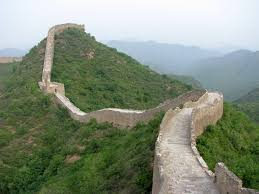
Great Wall
The Great Wall of China is an ancient series of walls and fortifications that stretches over 13,000 miles across northern China. It was built to protect the Chinese states and empires from invasions.
The construction of the wall began as early as the 7th century BC, but the most well-known sections were built by the Ming Dynasty (1368–1644).
The wall was made using various materials, including earth, wood, bricks, and stones. It features watchtowers, barracks, and signal stations, making it a comprehensive military defense system.
The Great Wall is a symbol of Chinese strength, endurance, and ingenuity. It is a UNESCO World Heritage Site and one of the most visited tourist attractions in the world.
While some sections of the wall have been preserved and restored, others have fallen into disrepair. Efforts are ongoing to protect and maintain this monumental structure.
4. **Hagia Sophia (Istanbul, Turkey)**

Hagia Sofia
Hagia Sophia, originally constructed as a cathedral in Constantinople (modern-day Istanbul) in 537 AD, is a masterpiece of Byzantine architecture. It has served as a cathedral, mosque, and now a museum.
Built under the reign of Emperor Justinian I, Hagia Sophia was the world’s largest cathedral for nearly 1,000 years. It symbolizes the glory of the Byzantine Empire.
Hagia Sophia is renowned for its massive dome, innovative use of space, and stunning mosaics. Its design has influenced the architecture of churches and mosques throughout history.
Hagia Sophia has been a symbol of both Christian and Islamic culture, reflecting the religious and political changes in the region. It remains a central landmark in Istanbul.
After serving as a museum, Hagia Sophia was reconverted into a mosque in 2020. It remains a popular destination for tourists and worshippers alike.
5. **Leaning Tower of Pisa (Italy)**
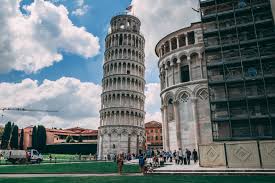
Leaning Tower
The Leaning Tower of Pisa is one of the most recognizable structures in the world, known for its unintended tilt. Construction began in 1173 and was completed in 1372.
The tower was built as the bell tower for the cathedral of Pisa. Its tilt began during construction due to an unstable foundation and was later exacerbated by soft ground on one side.
Despite the tilt, the tower was completed and has survived numerous earthquakes. Efforts to stabilize the structure began in the 20th century, and it has been successfully preserved.
The Leaning Tower of Pisa is a symbol of medieval European architecture and engineering. It has become a global icon, attracting millions of visitors each year.
The tower was closed to the public for a time for restoration but is now open, with the tilt reduced but preserved as a historic feature.
6. **Porcelain Tower of Nanjing (China)**
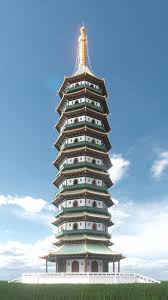
Porcelain Tower
The Porcelain Tower of Nanjing, also known as the Bao’en Temple, was a 15th-century pagoda built during the Ming Dynasty. It was one of the tallest buildings in China at the time.
The tower was commissioned by the Yongle Emperor as an act of filial piety and was considered one of the most beautiful buildings in the world due to its white porcelain bricks.
The tower stood 260 feet tall and was adorned with glazed porcelain bricks that reflected sunlight, making it shine brightly. It was topped with a golden spire and housed numerous Buddhist relics.
The Porcelain Tower was a symbol of cultural and religious significance in China and was admired by both locals and foreigners. It represented the height of Chinese craftsmanship during the Ming era.
The original tower was destroyed in the 19th century during the Taiping Rebellion. A modern replica has been built on the site, preserving the memory of the original structure.
7. **Catacombs of Kom el Shoqafa (Alexandria, Egypt)**

Catacombs of Kom el Shoqafa
The catacombs were used as a burial chamber for a single wealthy family, but they later expanded into a large communal burial ground. They blend Egyptian, Greek, and Roman cultural influences.
The catacombs feature a spiral staircase, burial niches, and a central tomb chamber. The walls are decorated with a mix of ancient Egyptian and Roman art, including statues and frescoes.
The Catacombs of Kom el Shoqafa are a testament to the multicultural nature of Alexandria during the Roman period. They reflect the fusion of different artistic and architectural traditions.
The catacombs are well-preserved and are a major tourist attraction in Alexandria. They provide valuable insights into the funerary practices and cultural interactions of ancient Egypt.
These are the Seven Wonders of the Medieval World, We tried to highlighting their historical significance, architectural marvels, and current status. These 7 wonders not only represent remarkable human achievement but also continue to inspire awe and admiration centuries after their creation.
You can also visit 7 Wonders of ancient world.